I’ve been invited to sail with Viking Cruises (river and ocean) several times and curious travelers who have never done so always ask my opinion of the Switzerland-based cruise line. Having sailed the Cities of Light: Prague to Paris, Into the Midnight Sun, and Tulips & Windmills itineraries, I think I’ve had enough of a proper Viking experience to be able to share my thoughts with others.
For the purposes of this post, I am going to provide an overview of the Tulips & Windmills tour.
Sailing with Viking really suits my personality; I am not a fan of huge, “party ships”. I’m sure you know the type–the cruises with non-stop clubbing and loud, tipsy guests walking around with daiquiri glasses as big as their heads. (I’m not travel-shaming–it’s just not my style.) Viking’s focus–and the area in which the brand really excels–is on culture and educational excursions. Its ships are beautifully appointed with minimalistic Nordic decor and speaks to the cruise line’s emphasis on class and sophistication.
My apologies if you don’t like spoilers, but I think you can already guess that I love Viking Cruises and would highly recommend booking a trip with the company. However, Viking is designed with a very specific type of traveler in mind and there are things you should consider before investing in one of its cruises.
Tulips & Windmills Itinerary
A perfect way to usher in the arrival of spring, this itinerary begins and ends in Amsterdam and offers guests an opportunity to experience the natural beauty of Holland and its historical side as well brief stops in Belgium.
For those who crave organization, Viking offers a bar-none, red carpet experience. Friendly assistance from staff and the arranging of shore excursions make for a seamless experience.
I will offer a snapshot of my 10-day itinerary; I won’t detail all of the shore excursions available.
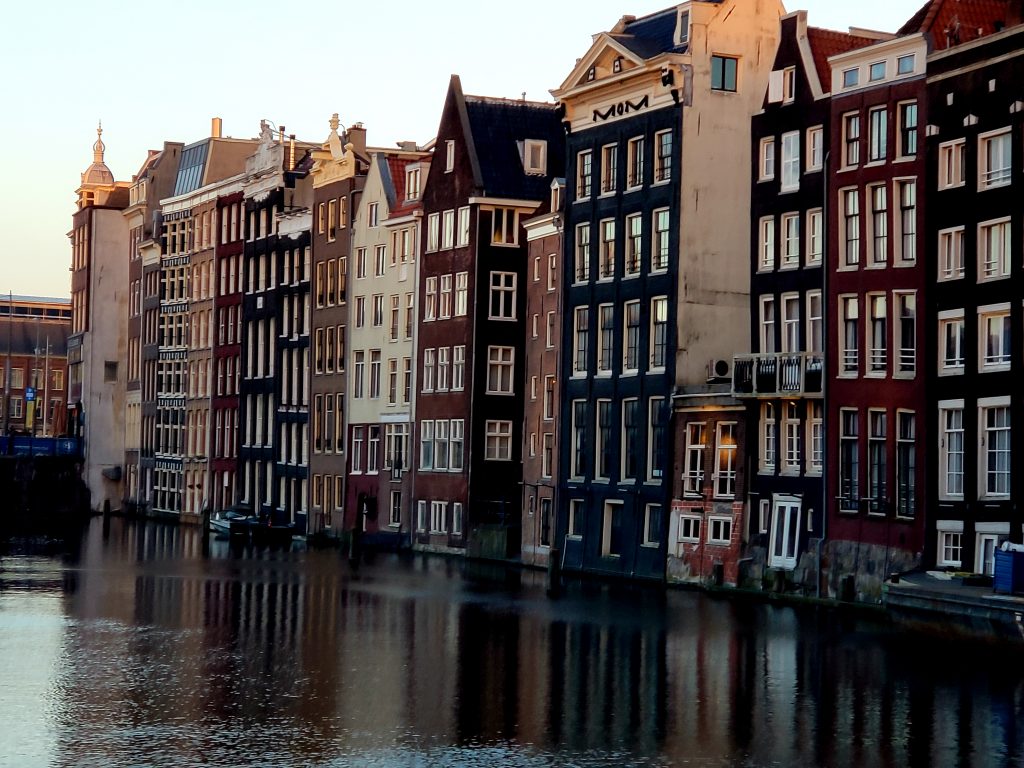
DAY 1 (Amsterdam, The Netherlands)
Capital of The Netherlands, Amsterdam may be notorious for its libertine spirit but it is renowned for its museums, colorful gardens, bicycle culture, and criss-cross network of canals. I arrived in Amsterdam via an international flight from the US. Upon arrival at the airport, I was greeted by a Viking staff member (easily spotted in her Viking-branded attire and her red “lollipop”–a term Viking uses to identify their signature stick-and-circle signage). She introduced herself and escorted me to the bus that would take passengers to the docked Herja (the ships are christened with the names of mythological Nordic gods, figures, and animals). Viking’s fleet of buses, the same ones used for the shore excursions/tours, are modern, air-conditioned, and some are wi-fi enabled and outfitted with electrical outlets–perfect for camera bugs and the tech savvy who want to charge their gear or send/edit pictures.
An optional walking tour was offered which is a wonderful way to become familiarized with the city, but after a brief rest, I chose to explore on my own. The ship was docked near the bustling city center and close to museums, restaurants, stores, and the train station–all of which were frequented by residents, further giving an authentic sense of the area.
DAY 2 (Amsterdam, The Netherlands)
After spending the previous day doing quite a bit of exploring, I practically felt like a Dutch citizen. A post-breakfast canal tour in a glass-topped boat offered the first opportunity to traverse those famous canals and get an up-close glimpse of the gorgeous Golden Age architecture. A canal tour might sound too tourist-y for seasoned travelers but the waterways are one of the most frequently used modes of transportation by residents so I didn’t feel out of place at all–in fact, quite the opposite.
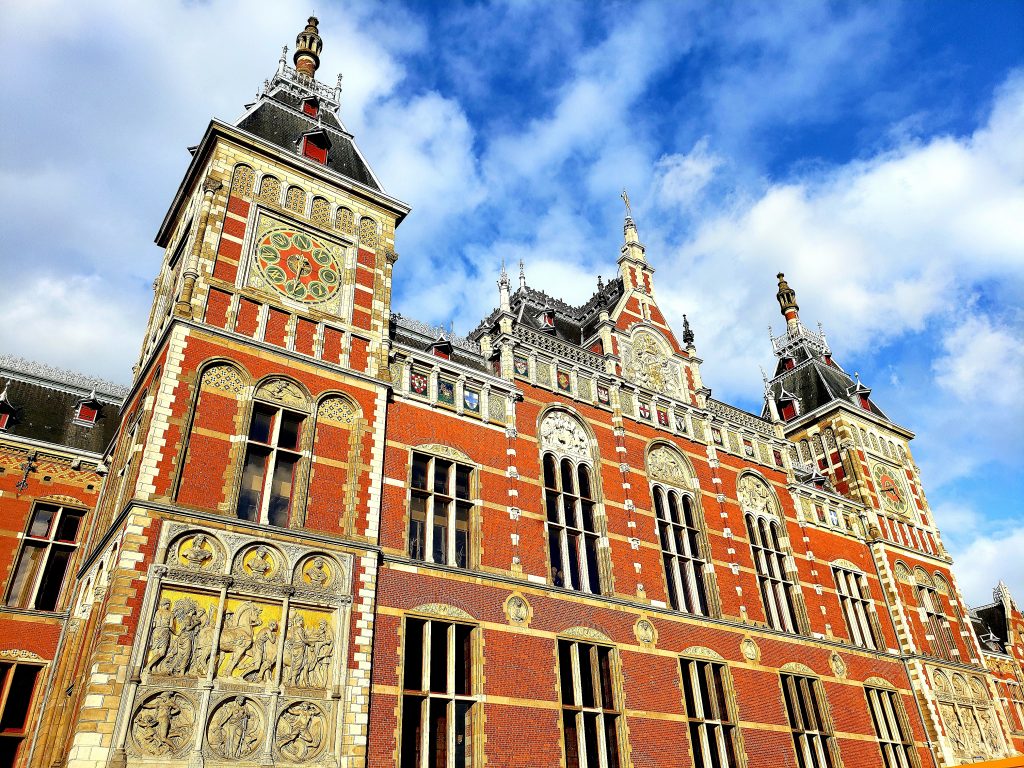
Later in the afternoon, I visited the Rijksmuseum to see the collection of paintings by the Dutch Masters and intentionally got lost wandering down alleyways that opened to charming streets lined by the city’s famous tall, narrow (and sometimes leaning) homes. I also visited the Anne Frank House (I ordered my ticket online over a month in advance); I have always been saddened and fascinated with the story of the young girl whose diary that documented her family’s hiding during the Holocaust would become famous all over the world, but I didn’t enjoy the experience. The house is cramped, crowded, and doesn’t offer a comprehensive view of the history of the Holocaust like the Jewish Historical Museum does. I didn’t get a chance to visit the Van Gogh museum but did get to see an exhibit of his works on another day at the Kröller-Müller Museum.
DAY 3 (Hoorn, The Netherlands)
On this dove-grey misty morning, we sailed across the Ijsselmeer (known as Lake Ijssel in English) and docked in the old shipping village of Hoorn. Not much has changed since its maritime heyday and its vintage charm is still visible. I visited a cheese shop in the town’s main square and, after a stroll down a modern shopping street, I went to the Westfries Museum–another museum that pays homage to the country’s Golden Age.
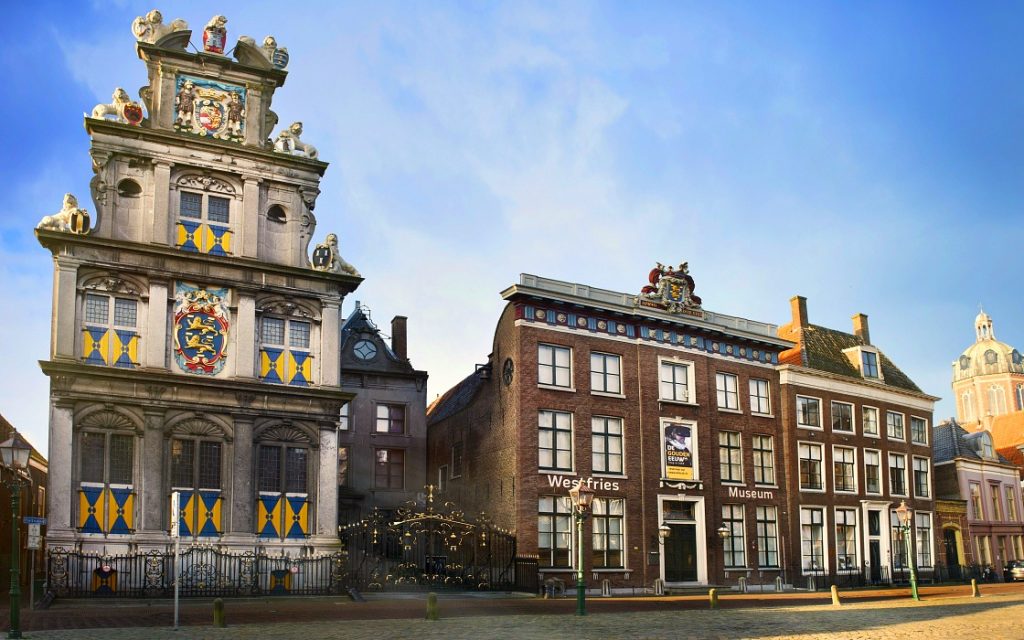
If you’re sensing a museum theme here, you’re absolutely correct–The Netherlands is a country proud of its heritage and history and has a number of museums to share it with the rest of the world.
DAY 4 (Arnhem, The Netherlands)
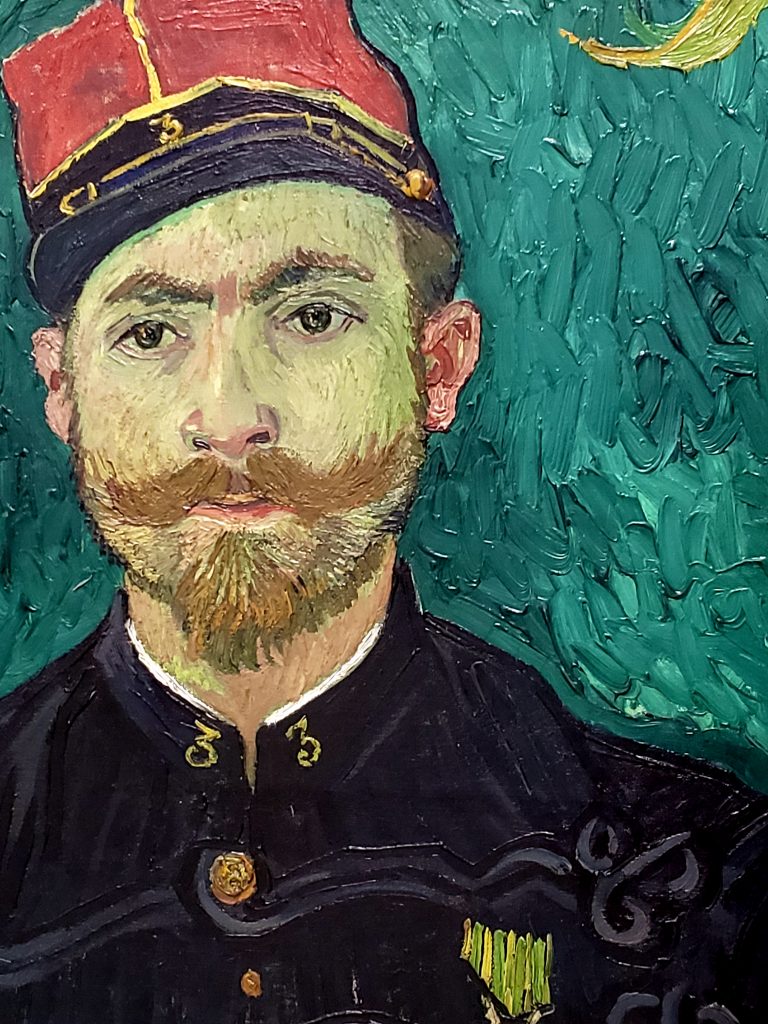
The first noticeable thing about Arnhem is its stretches of open green spaces, but it is best known for its wartime history. (A Viking cruise is a history buff’s dream; there is a keen focus on famous World War monuments and important landmarks.) A number of World War II-focused excursions were offered, including one that delved into the city’s role in Operation Market Garden–an ill-fated Allied operation, but I chose not to go. I appreciate wartime history, but there are times when I find such tours to be depressing and too heavy a weight on the mind and heart. Instead, I opted to board the Viking tour bus and make the hour-long trek to the
Kröller-Müller Museum to go see the works of The Netherlands’ most famous native son Vincent Van Gogh (interestingly, in Dutch, the painter’s surname is pronounced von-ho with a guttural ‘h’).
The museum is small but houses works from famous artists like Piet Mondriaan, Claude Monet, and Auguste Rodin. The backstory of the museum, which the tour guide shared onboard the bus, was fascinating. It was founded by Helene Kröller-Müller, a woman with a serious passion for Van Gogh, whose love of procuring his work turned into the largest private collection of the artist’s paintings in the world. Having amassed and curated such an important collection, she decided to open a museum. The museum’s grounds are also home to Europe’s largest sculpture garden with more than 160 works from the art world’s most recognizable names.
DAY 5 (Kinderdijk, The Netherlands)
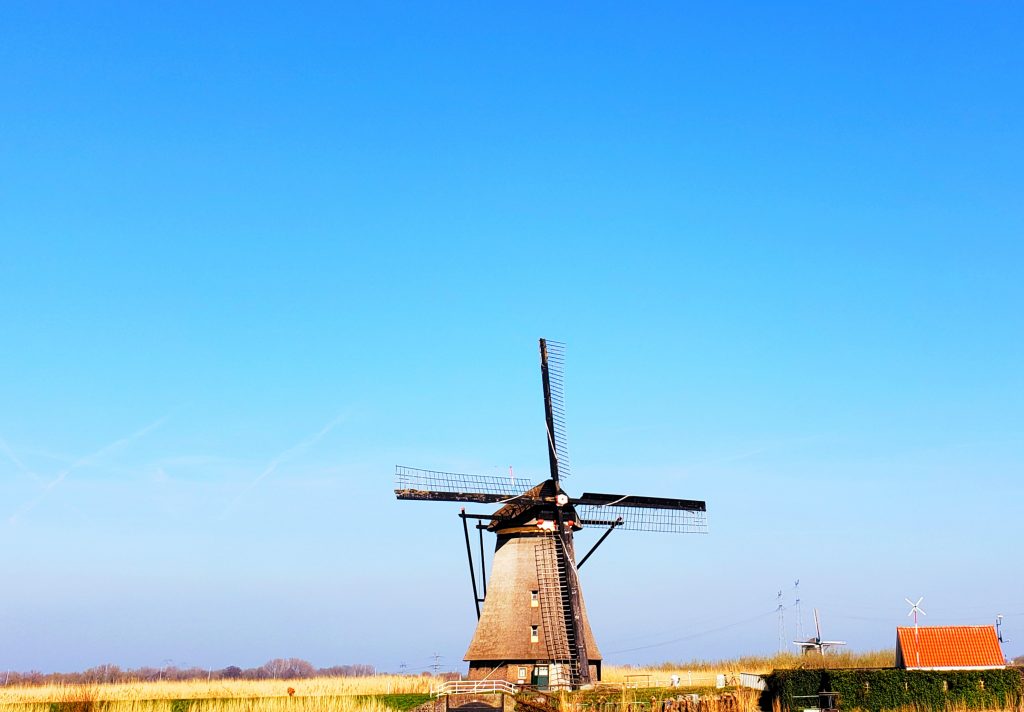
The town of Kinderdijk probably best captures what many people imagine when they think of Holland. (Interesting fact: Though Holland and The Netherlands are often used interchangeably, Kinderdijk is in the region of Holland which is located in the nation of The Netherlands.) This is where the famous windmills and dikes can be found. If not for windmills and their ability to pump away water, much of The Netherlands would be underwater! On this tour, I met a miller (windmill operator) who actually lived in a windmill with his wife and two children. He generously gave me a tour of the diminutive space–shuttered bedrooms built into tiny nooks, wooden ladders used to reach the second story, and a lot of space-saving hooks to hang cooking utensils and clothing on. He mentioned that his family had no car and only used bicycles for transportation; the closest market was a 20-minute ride away and he only bought enough groceries to fit in the small metal basket affixed to the front of his bicycle.
DAY 6 (Antwerp, Belgium)

Somehow on the previous day, I managed to catch a nasty cold that effectively rendered me useless for Day 6; I felt horrible so I skipped the morning half-day tour. After nursing a bowl of soup brought to my room by one of the kind staff members, I felt well enough to explore on my own. Antwerp is gorgeous and, like most of Europe, quite walkable. Since I missed the morning tour, I visited the famous Cathedral of Our Lady–I absolutely love churches and when I travel, I try to visit as many as possible. The cathedral is home to a huge triptych (3-paneled artwork) altarpiece painted by renowned Flemish artist Paul Rubens. The church houses a few modern art installations and several traditional pieces. If you’re an architecture buff, you must visit. Also, be sure to visit the gift shop; I typically avoid gift shops as they are often overpriced tourist traps but this one had charm. There were religious items like prayer cards, saint candles, and rosaries but also beer and glass gift boxes–it is Belgium, after all.
DAY 7 (Ghent & Bruges, Belgium)
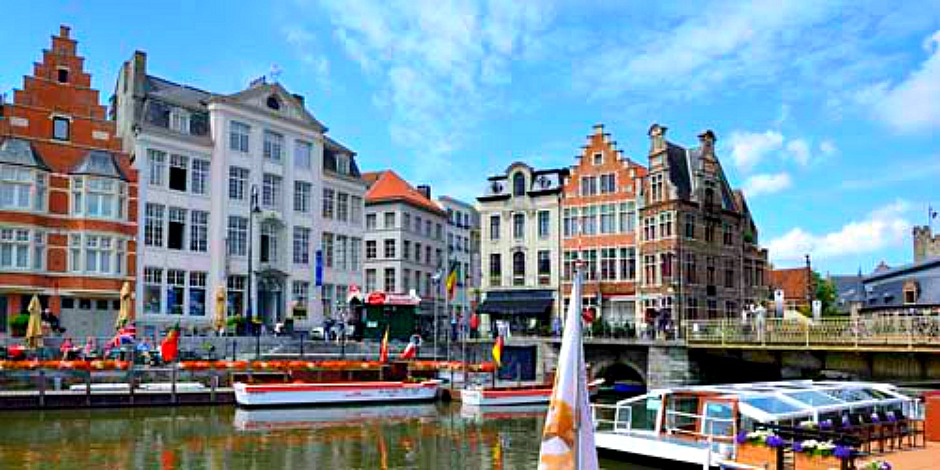
From Ghent, we traveled to Bruges, one of the oldest towns in Flanders. I went on the city center walking tour which took the group through the cultural and artistic area–home to important Flemish painters Eyck and Memling. Like Amsterdam, the area is known for its network of canals and I enjoyed strolling over bridges (made excellent backdrops for pictures) and I stopped at a café for a hot chocolate. The group also visited the hidden courtyard known as Béguinage, a collection of convent houses for beguines, emancipated lay-women who led pious and celibate lives like nuns. Today, nuns from the Order of St. Benedict and women who have chosen to remain unmarried occupy the space. The enclave looked as if it had been frozen in time–not much has changed since the 17th century.
DAY 8 (Delta Works, Zeeland, The Netherlands)
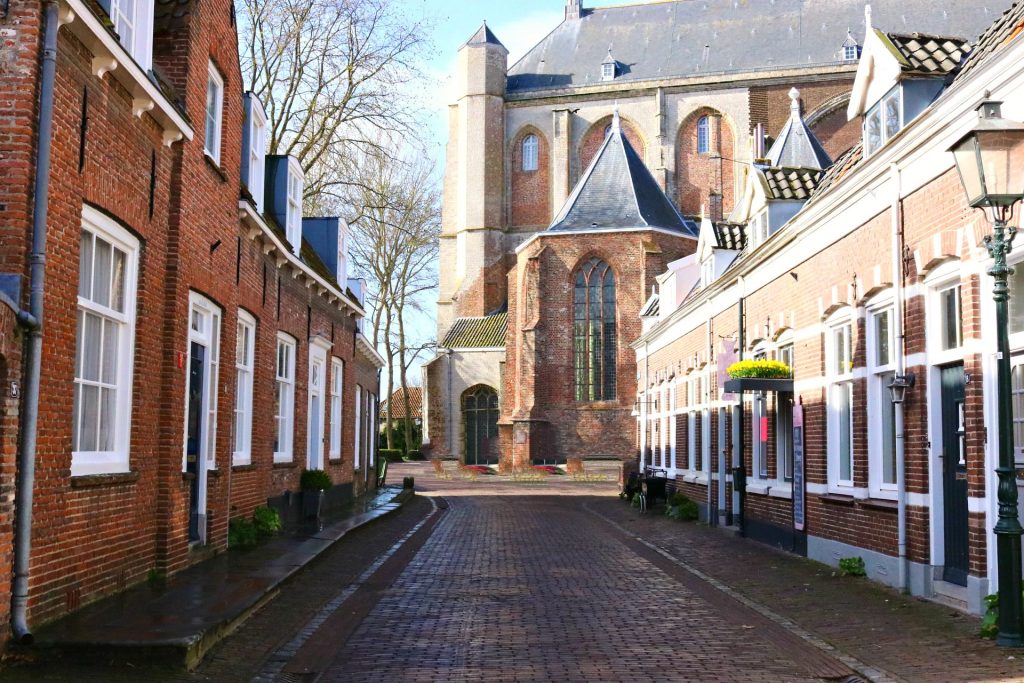
The excursion to Delta Works, an ingenious and elaborate system of enormous doors that can be lowered during spring tides to protect the area from floods (while still allowing tides to ebb and flow), was interesting but very tedious. I visited the flood museum, a solemn space that pulls double duty as both museum and memorial to residents who perished in the flood of 1953. To me, the most interesting part was the “moving memorial” a blue-light art installation of sorts that projected the names of the flood victims across a stretch of sand.
There was a brief stop in charming little Zeeland, but it was freezing cold, blustery, and rainy so walking around wasn’t really a feasible idea. I popped into a café to have a hot chocolate to wait out the rain before boarding the bus back to the ship.
DAY 9 (Amsterdam, The Netherlands)
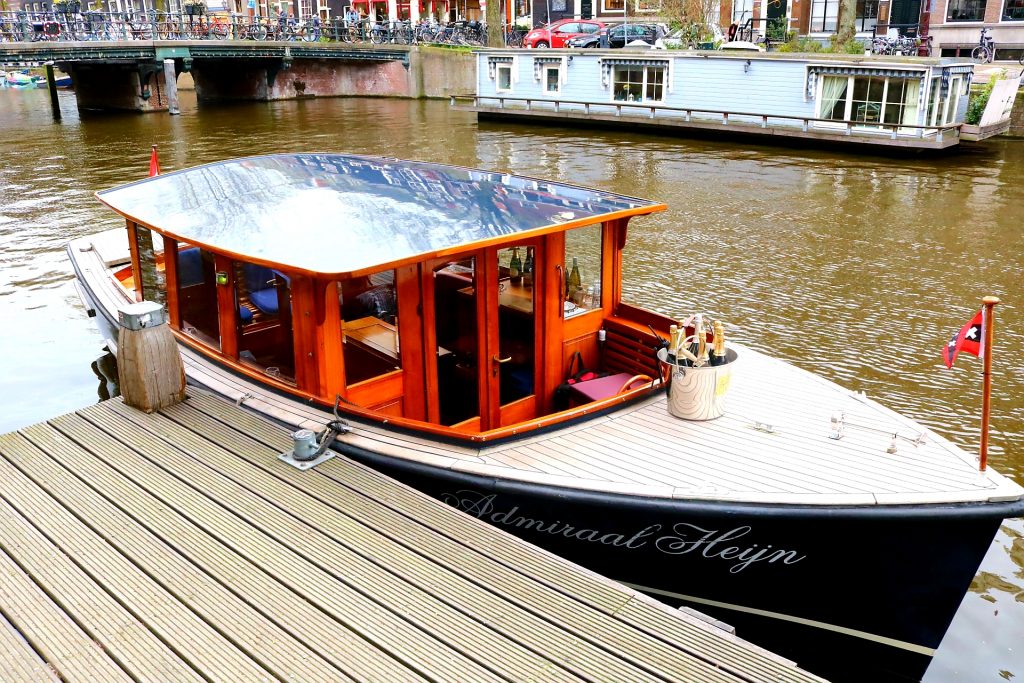
OK, I’ll admit it–I’m still kicking myself that I decided to skip the famed Keukenhof Gardens whose exhibitions house millions of blooming tulips, the signature flower of Holland. It was so cold during my entire visit, I didn’t think the tulips would be in bloom–I was wrong. Very wrong. Fellow passengers who went on the tour returned to the ship with enviable stories about the beautiful gardens.
However, I did spend my day with Eating Europe (a food tour company that operates in cities all over the world; not affiliated with Viking) and it was a wonderful way to familiarize myself with Dutch food (raw herring notwithstanding). The food tour included visits to several eateries and ended with a private canal tour on a gorgeous, swanky boat.
DAY 10 (Amsterdam, The Netherlands)
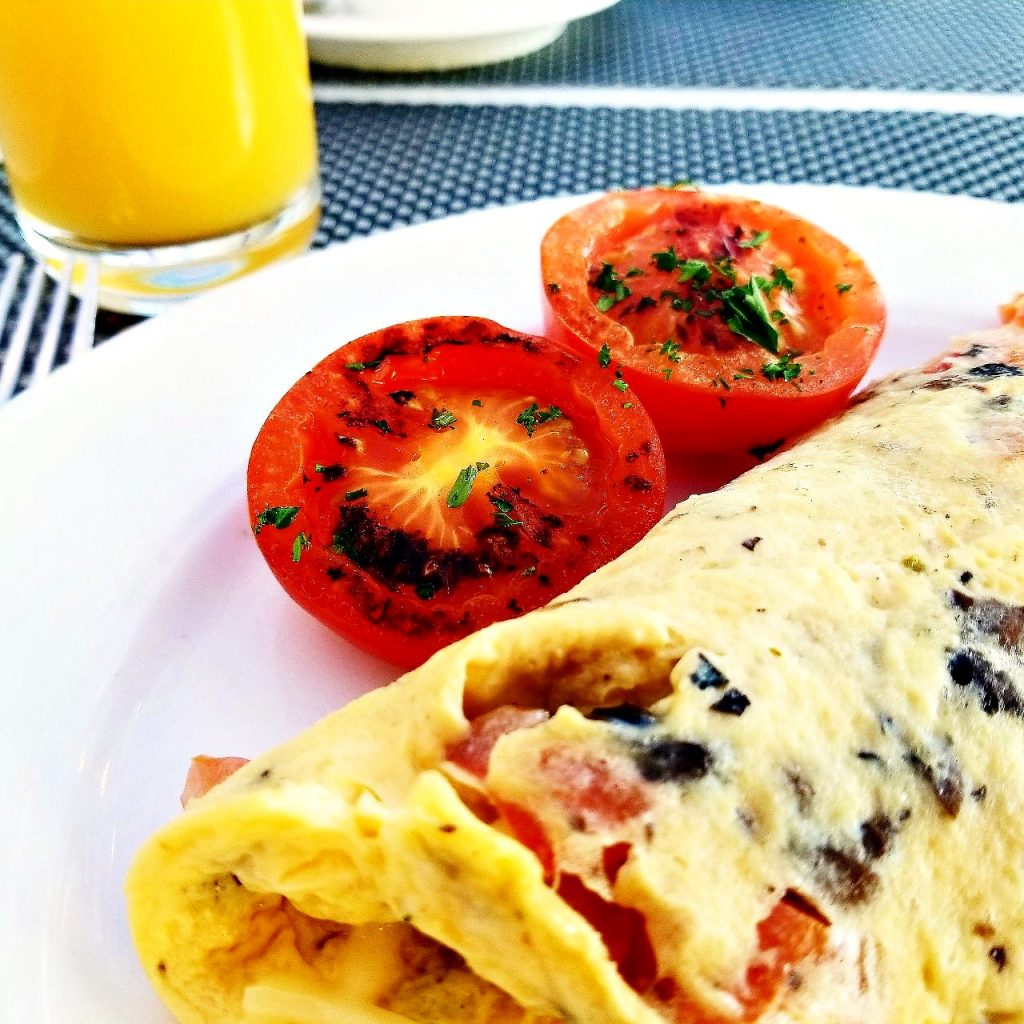
On the last day, there was only time for a quick breakfast prior to disembarkation and my early flight back home.
General Overview of a Viking Cruise
Remember how I said Viking caters to a specific kind of traveler? Well, here are some things I observed:
- The demographic skews older. The average age of a Viking traveler, from what I gathered, is about 70 years old. On every Viking cruise I’ve taken, I was always the youngest passenger (quite the ego boost).
- In terms of duration, the itineraries are fairly long (averaging 8 – 14 days) which means the cruises are rather expensive and are geared toward affluent travelers.
- The leisurely pace of a Viking cruise is appealing to those who truly want the vacation experience; there are different activity levels for the shore excursions/tours.
- Onboarding and disembarkation are seamless experiences; the super-efficient staff ensure that the process goes off without a hitch.
The Difference Between River Cruises & Ocean Cruises
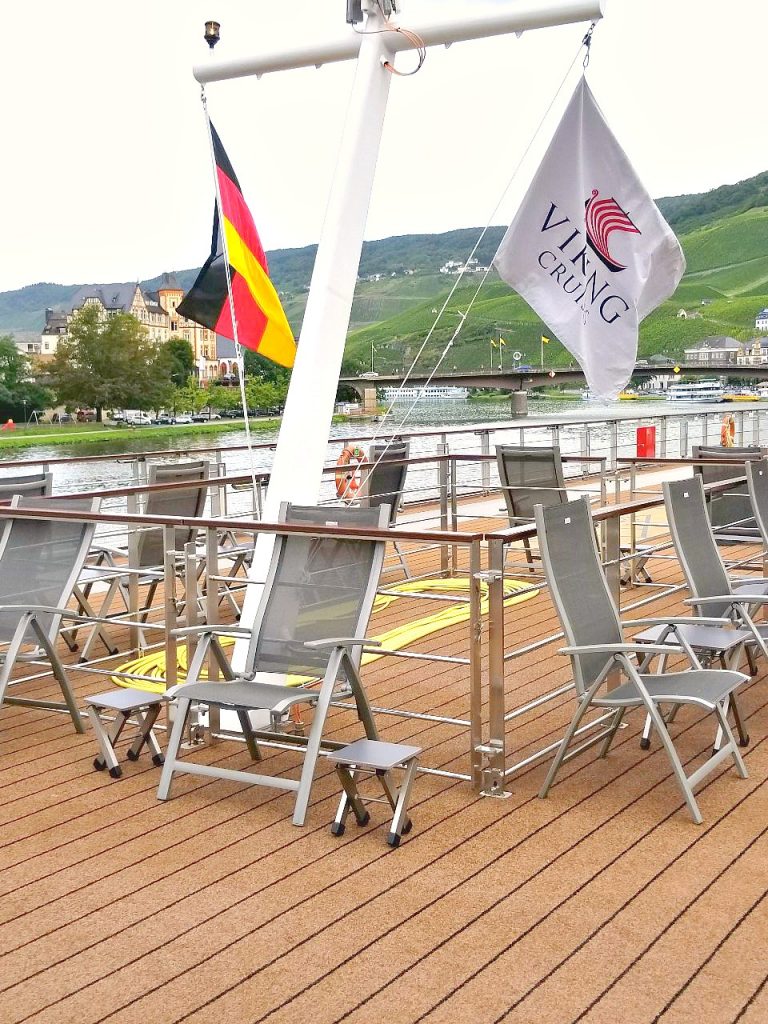
- Size – Because of their smaller and narrower profile, river ships are able to navigate waterways that ocean ships simply cannot and that affords passengers the opportunity to be in the backyard (sometimes literally) of the most charming villages and towns.
- Capacity – The average sailing capacity aboard a Viking ship is approximately 150, making for an intimate experience and offers more attentive service from staff.
- Calmer journey – Chances are, you’ve seen harrowing video footage of cruise ships navigating rough seas, but I guarantee none of them were river ships because, in general, they sail through calmer waters and aren’t subjected to dangerously choppy water conditions.
- Culture over clubbing – Viking definitely values cultural education and the sightseeing experience over on-board entertainment. (You’ll find no nightclubs or casinos on a Viking river cruise ship.) From libraries stocked with books about Scandinavia and Norse mythology to singers, entertainers, and craftsmen who come onboard a few times during the cruise’s duration, Viking places a high value on enrichment.
- Easier disembarkation/no tinder boats – Thanks to its smaller size, it is far easier to get on and off a river cruise ship than an ocean cruise ship. There’s no waiting for hours or lining up and, because a river cruise ship can always pull in close to a dock or harbor, there’s no need for tinder boats (the small boats used by larger cruise lines to transport passengers to harbors that cannot accommodate large cruise ships).
The Viking Touch (Flights & Pre-trip Experience)
- Viking truly excels in providing a red carpet customer service experience. The company offers travelers the opportunity to purchase airfare by taking advantage of its special airline partnerships. It is often less expensive to book flights through Viking than to purchase it independently. Viking also provides round-trip transfers that get you to and from the airport.
- Once your trip is booked, you are assigned a booking number and directed toward Viking’s pre-trip online portal called My Viking Journey where you can view your itinerary and choose your shore excursions (the free ones included with your cruise as well as the paid excursions/tours). The portal offers detailed information about the destinations you will visit and the available tours; there is also a countdown to your departure date and a handy checklist that reminds you of things you need to do/pack.
- Approximately 2 – 3 weeks prior to your sailing, you will receive a beautiful cloth pouch embroidered with a travel-oriented quote that includes all of your pertinent sailing documents, paper luggage tags, and a keepsake luggage tag as a small memento of your Viking journey. It’s a small but beautiful touch in my opinion.
The Viking On-board Experience
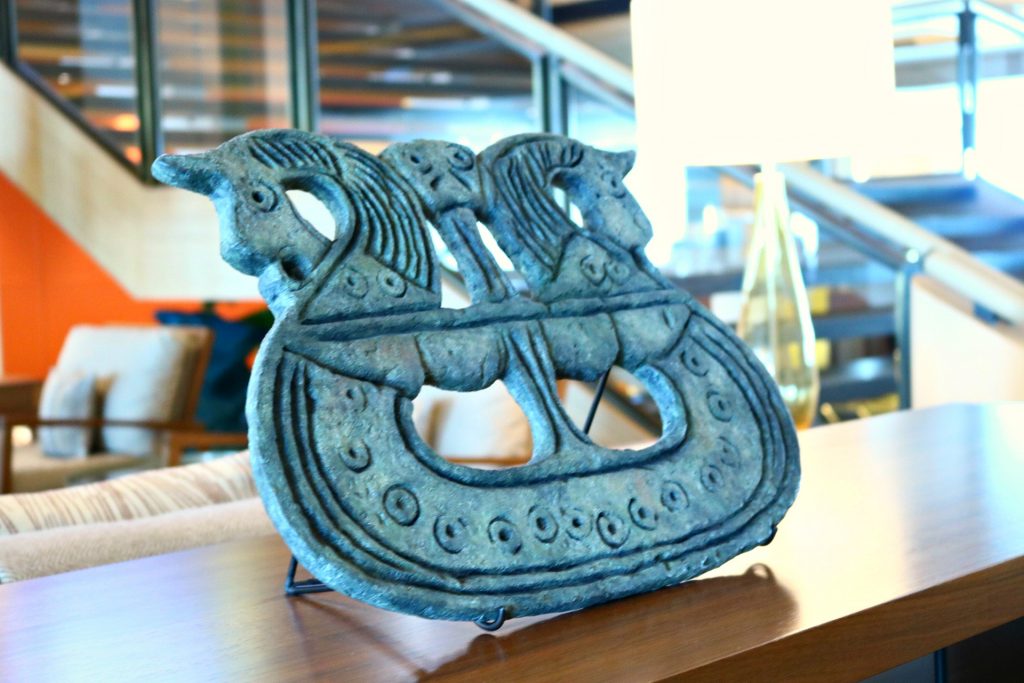
On the Tulips & Windmills cruise, I sailed aboard the Viking Herja. Each ship takes its name from a Norse god, goddess, or animal further emphasizing Viking’s pride in its Scandinavian roots.
Viking’s fleet of river cruise ships are quite similar in design and decor–Nordic minimalism done in a tasteful, neutral palette—but there are small touches that vary from ship to ship. I found my veranda stateroom to be bright and spacious and appointed in understated elegance; the bathroom also featured Freyja toiletries and a heated floor (perfect for those cold weather Nordic sailings). The closet, drawer, and under-bed space was more than enough for me (as a solo traveler); I unpacked immediately and put my luggage and clothing away. For me, a tidy room makes for a more pleasant travel experience and maximizing space onboard a small cruise ship is crucial. When sailing with Viking, you only have to unpack once–no bundling up your belongings and packing/unpacking in different ports.
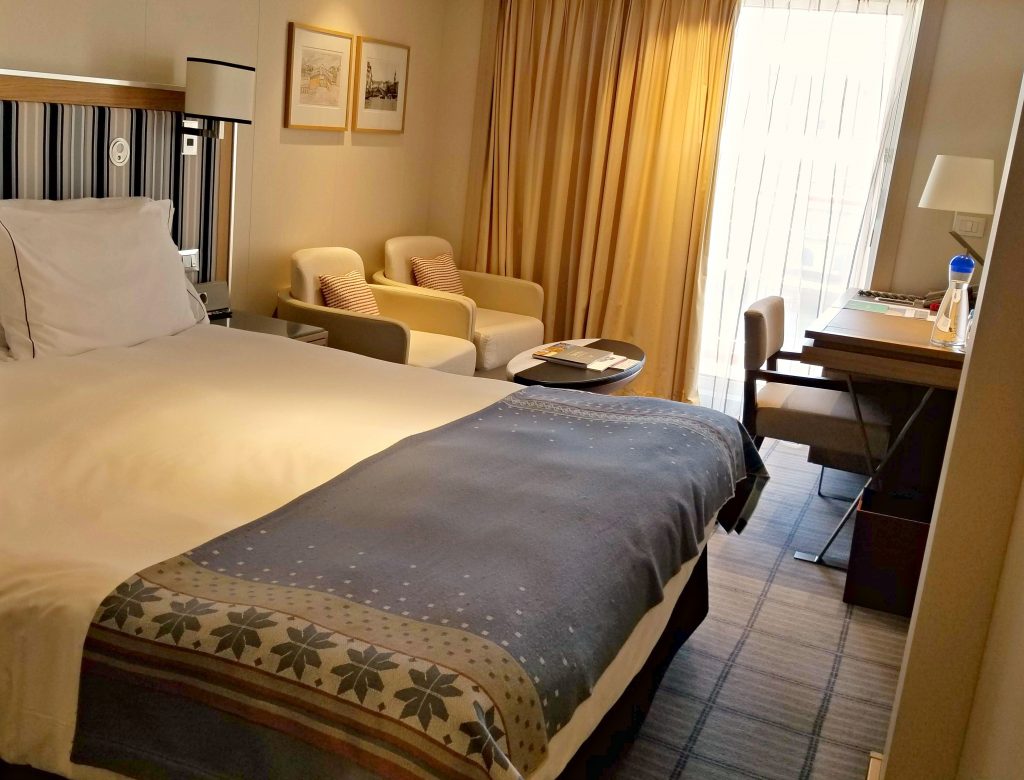
The in-room flatscreen TV also doubles as an information board; you can keep up with the daily dining menu, weather, and itinerary information. There is also a selection of current movies and the Viking-sponsored series Downton Abbey (perfect viewing for rainy port days or enjoying during your down time). Viking also offers free onboard wi-fi which is almost unheard of in the cruising industry. Of course, it operates a bit slower (and sometimes becomes entirely non-functional) when sailing but that is to be expected with satellite wi-fi. Even with its occasional kinks, this is an absolute godsend for a digital nomad/internet addict like me. Rooms are outfitted with several European and American electrical outlets and charging docks for your Audiovox device (the small device worn to hear your guide on excursions/tours).
Rooms are also stocked with carafes of water (and occasionally a plate of fresh fruit) daily and cleaned first thing in the morning; there is an evening turn-down service as well.
On the second floor, there was also a small, nook-like hot beverage/dessert station complete with a selection of tea bags, a coffee/espresso/hot chocolate machine, and a calorie-bomb array of cookies and pastries. I loved grabbing a cup of hot peppermint tea and a cookie after returning from a day of touring.
On-board Dining
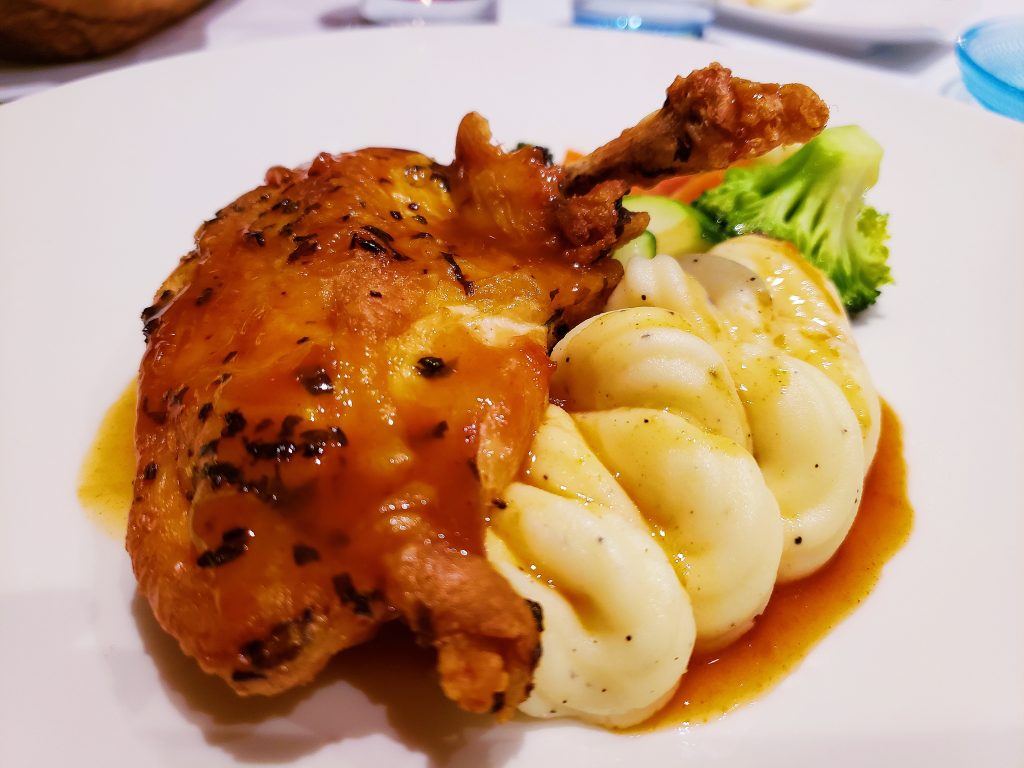
As a food and travel writer, the most frequently asked question I get is, “How is the food?” Dining ranks as one of the most important areas of concern when it comes to cruising and it should. Think about it: You’re going to be dining onboard the ship most of the time and getting an idea of what it typically offered is a smart move. Admittedly, because of my profession, I am a bit more critical of onboard dining experiences than most. If using a standard 5-star rating system, I would give Viking a solid 3 for its overall culinary efforts. In my opinion, the breakfast and dinner menus are where the culinary magic lies, but lunch often feels like a throwaway where odd dishes and sandwiches are served.
- Casual and formal options – This refers to food/menu options not clothing. Unlike larger cruise lines, there is no formal night or strict dress code. (In fact, I was shocked and a bit dismayed at how some people dressed for meals.) If you’re looking for an upscale multi-course dining experience, choose to dine in the formal restaurant. Head to the Aquavit Terrace on the second floor for a more relaxed experience. Though there is an indoor seating option, it’s fun to enjoy your meal al fresco if weather permits.
- Local/regional cuisine – In an effort to connect guests with the area the ship is visiting and enrich the dining experience, Viking goes above and beyond to incorporate local delicacies into its menus–local produce and meats are used to create traditional dishes alongside standard fare. When I sailed with Viking to the Arctic Circle, one night’s dinner menu included reindeer in a juniper berry sauce.
- Drink up – I don’t drink alcohol, but I recognize the unusualness (and awesomeness) of Viking’s decision to include wine with dinner if you choose to imbibe. A Silver Spirits alcohol package is available for an additional fee; you can add this option when booking your cruise.
Final Thoughts
Overall, I would give the entire Viking experience (the cruise itself, stateroom, excursions/tours, dining, and booking experience) 4.5/5 stars. If you’re contemplating booking a Viking cruise and would like to ask me a question, feel free to do so. I love to talk about sailing with what has turned out to be one of my favorite cruise lines.

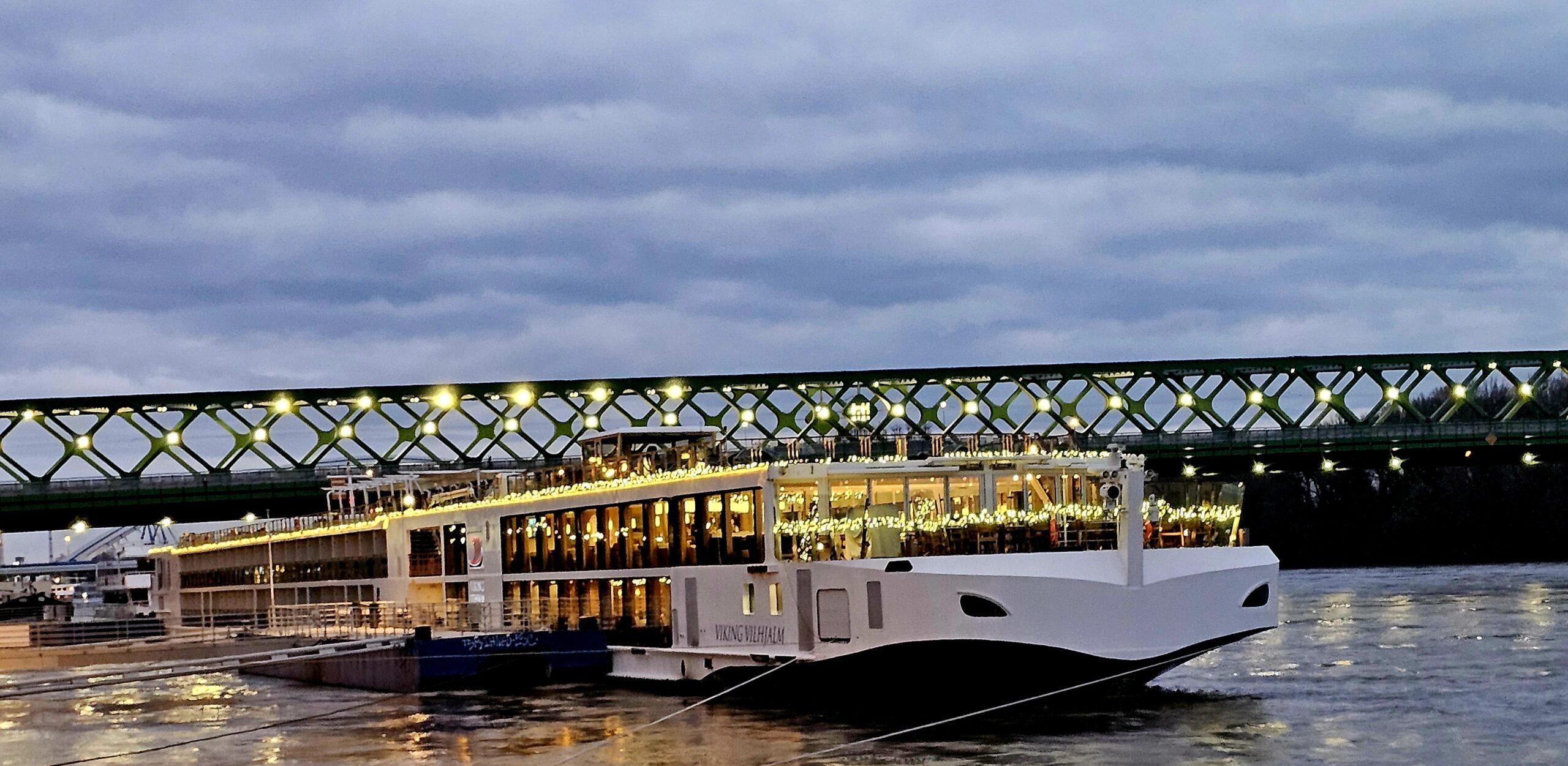
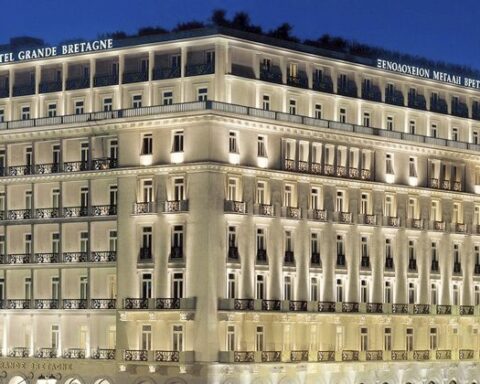

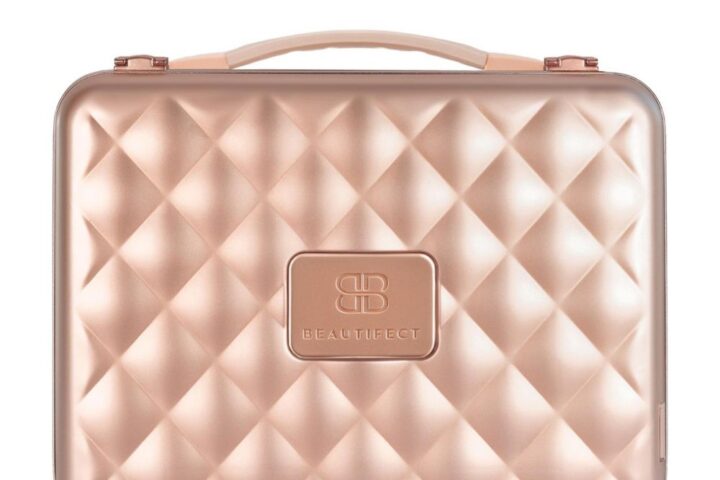

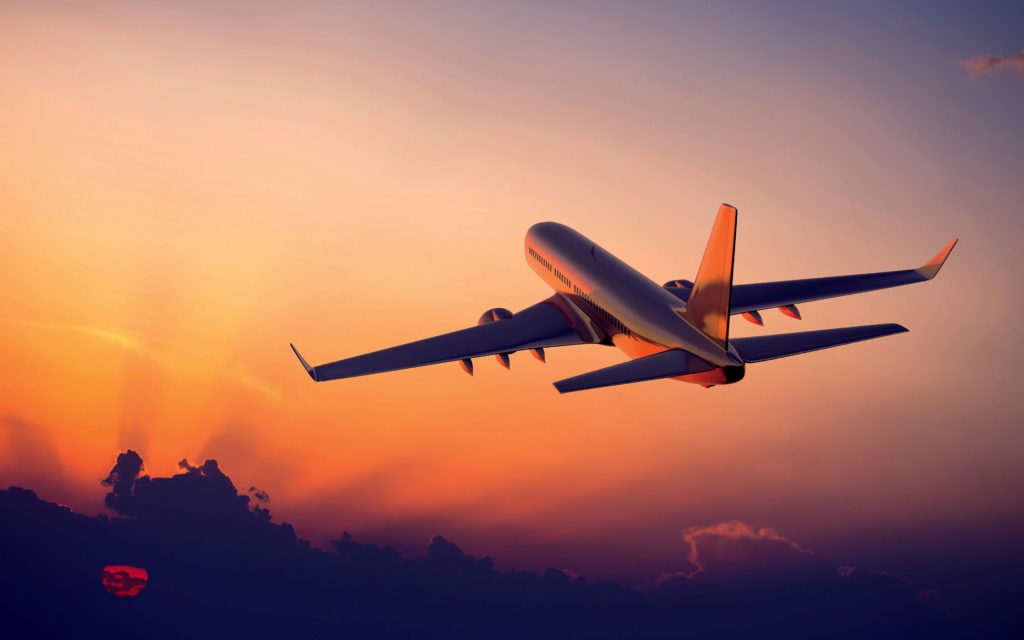
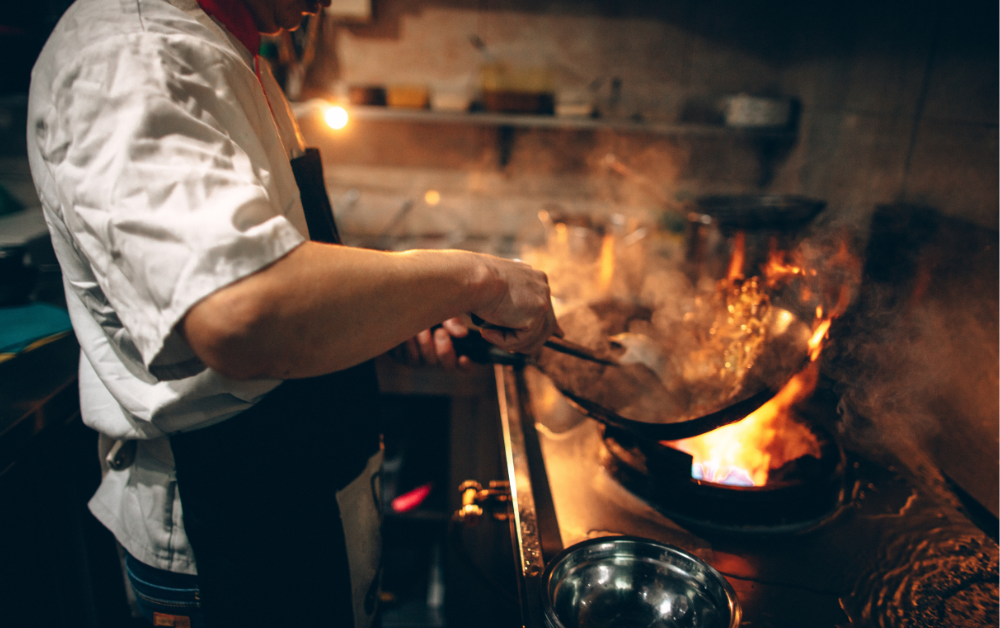

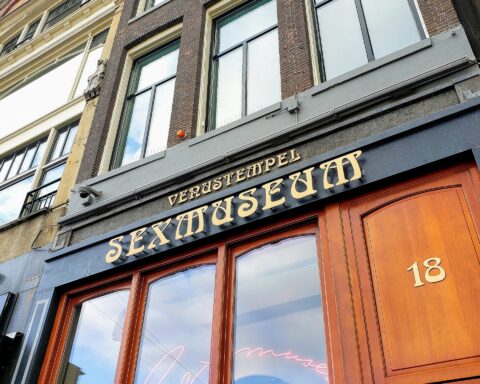
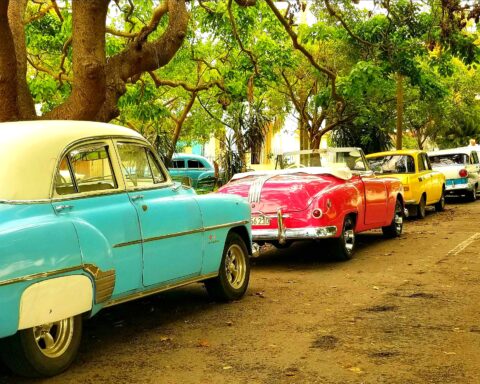
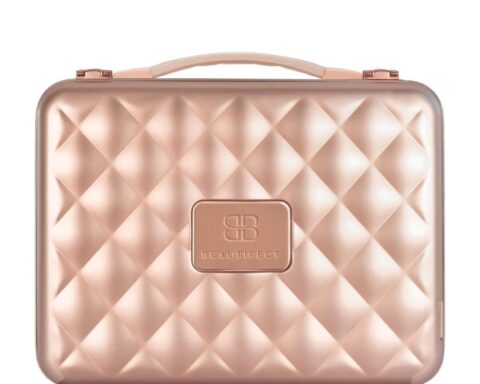
no entertainment there is nothing to do i don’t read books sounds boring
Depends on what you consider entertainment. There are fun classes onboard, artist and cooking demos, photography lessons, and cultural lectures. It’s definitely a different cruise product (aka not a ‘party ship’) geared toward a specific clientele.
Considering a Christmas Market 8 day cruise in early December 2022 as a solo traveler in my early 50s. How is the cruise for a solo traveler (safety, dining, excursions, etc). I am an experienced traveler and not into party cruises. Any insight and thoughts you have would be appreciate. Also do they have room service? Thanks
Oooh, the Christmas cruises are spectacular. I, too, am a solo traveler and I love how the river ships are small enough to allow for communal dining and hanging out with fellow passengers, but also offer quiet nooks and spaces (as well as a small library) for alone time.
The staff are friendly and very adept at taking care of passengers. I think that’s owing to the fact that the ships only carry about 150 people. The staff are knowledgeable about the excursions, ports of call, restaurants/shopping and help you avoid tourist traps and the like. When the ships dock, there are always staff members handing out wallet cards with the ship’s name, location, and telephone number in the event you get separated from the group or get lost while venturing out solo. If you go on a Viking-sponsored excursion, the guide always carries a branded “lollipop” (a large circle on a stick for easy spotting), and there’s a headcount before departing. I’ve been known to spend a little too much time shopping and holding up the rest of the group–the guides have always been gracious and I’ve never been stranded.
When it comes to dining, I prefer dinner to any other on-board meal. Breakfast is good and offers a nice variety, but lunch is almost a complete throwaway–not very appetizing or creative. Dinner is where the culinary staff shines–local, seasonal produce that often reflects the cuisine of whatever location you’re in. For example, on a Viking ocean cruise to the Arctic Circle, the chef prepared reindeer loin in a juniper berry sauce. Delish!
The excursions are interesting and education- and culture-oriented–a bit war-heavy, but that’s unavoidable when discussing European history, I suppose.
Room service (which is available 24/7 and free of charge) is only offered on Viking ocean cruises, not river. FYI, spa treatments are only available on ocean ships as well.
I hope this helps and, if you go, please let me know your thoughts!
Are there toilets on the Viking tour buses that you can use in an emergency? I have Crohn’s and sometimes if I can use a toilet, that’s when I need it the most! 🙁
Good question, Chris. I don’t think so. I have IBS (so I’m sympathetic to your issue), and Viking is really good about making frequent stops and allowing restroom breaks during guided tours.
Saved as a favorite, I love your blog!
Hi there, I read your new stuff regularly. Your story-telling style is witty,
keep up the good work!